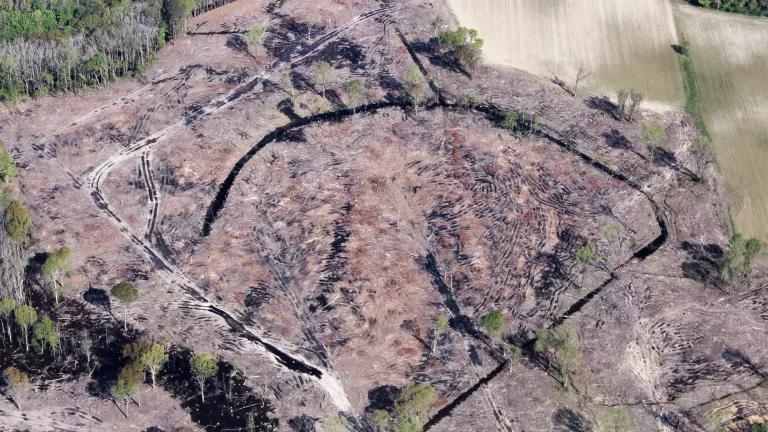Sweeping changes in the way people manage and relate to lands are necessary and possible to avert the worst impacts of climate change and realize the promise of the Paris climate agreement, but the window for action is narrow and closing. That’s the main message from a major new report by the world’s most authoritative group of climate scientists, the Intergovernmental Panel on Climate Change (IPCC).
The previous IPCC report last fall stimulated widespread public awareness of the need to act rapidly to avert the worst impacts of the climate crisis that will occur above 1.5 degrees Celsius of global warming. And it set the unequivocal benchmark to which all government and business leaders serious about addressing climate change must now align their actions. The new report could provide a similar wake-up call for the land sector, which is often given less attention than the energy and transportation sectors in the portfolio of climate solutions.
Activities in the land sector—such as agriculture and forestry—are a major source of climate change, representing approximately one-quarter of all human-induced greenhouse gas emissions. Yet land also plays a fundamental role in regulating the climate, absorbing approximately one-third of all carbon pollution from burning fossil fuels according to the IPCC. However, the ability of land to absorb carbon from the atmosphere diminishes as temperatures rise, necessitating rapid and widespread action to fulfill its full potential as a solution.
Land’s central but under-appreciated role in the global response to climate change has led to a growing call for “natural climate solutions.” These solutions include conservation, restoration, reforestation, and sustainable forest and agricultural management practices that avoid emitting greenhouse gases and/or draw down carbon pollution from the atmosphere.
Natural climate solutions represent some of the most effective and cost-efficient actions available to tackle the climate challenge. Land-based natural climate solutions have the potential to provide 37 per cent of the cost-effective climate change mitigation needed until 2030 to meet the goal of the Paris Agreement. Natural climate solutions are essential to reduce emissions deeply enough to achieve the objectives of the Paris Agreement, but must be undertaken simultaneously with—and not as a substitute to—massive reductions in climate pollution from fossil fuels and acceleration of low-carbon solutions such as energy efficiency and renewable energy.
Recent NRDC analysis, conducted with NewClimate Institute, found that natural climate solutions are some of the highest-impact climate actions in the portfolio of emissions reduction strategies needed to keep the world on track for the Paris Agreement. Our report found that halting natural forest loss by 2030 and restoring degraded forests can reduce 2.5 gigatonnes of greenhouse gas emissions per year by 2030—more than the current annual emissions of Russia, the world’s fifth largest emitter. And shifting to healthier and less meat-intensive diets, another action analyzed in the report, could reduce around 1 gigatonne of greenhouse gas emissions per year by 2030—more than the current annual emissions of Germany, the world’s eighth largest emitter.
And the huge climate dividends of natural climate solutions also come with a host of additional benefits that make them truly win-win-win and no-regrets actions. These include making billions of people more resilient to the effects of climate change, providing fresh air and clean water, protecting biodiversity, providing sustainable livelihoods, and promoting healthier and more secure food. To quantify just some of these invaluable benefits, delivering natural climate solutions at a global scale can lift one billion people out of poverty, create 80 million jobs, and add $2.3 trillion in productive growth by 2030.
The IPCC Land and Climate Change report comes at an opportune moment to spotlight the win-win-win benefits of natural climate solutions to key decision makers in the global community. Next month, the U.N. Secretary-General will convene a Climate Action Summit in New York to spur ambition from all countries, as well as business, states, cities, and investors, into greater alignment with the demands of science and the goals of the Paris Agreement.
One of the thematic tracks of the Climate Action Summit is focused on enhancing the ambition of “Nature-Based Solutions.” The track, co-led by China and New Zealand, seeks to better incorporate natural climate solutions into countries’ Paris Agreement targets that are due to be revised by the end of 2020, and to mobilize the scale of investments needed to realize their potential to tackle a major piece of the climate challenge while also providing significant co-benefits.
One of the most practical ways countries can simultaneously address the twin climate and biodiversity crises is to protect large areas of carbon and biodiversity-rich land from over-use and exploitation. Protecting land allows it to draw down carbon pollution and prevent its release from unsustainable activities, while also building resilience to climate change by protecting critical ecosystems upon which biodiversity and people depend. That is why NRDC has joined other leading global climate and conservation organizations to call for strongly protecting at least 30% of land (and 30% of oceans) by 2030 to ensure nature’s contribution to climate mitigation and resilience is maximized.
Today’s IPCC report should serve as a call to action for all decision makers to incorporate natural climate solutions as a central component in the global response to climate change. The science tells us that protecting and restoring land is essential to avoid the worst impacts of climate change, and that mitigating climate change helps sustain the land and natural systems that protect and nourish us.
The rationale for swift and sweeping action in the land sector to address the twin climate and biodiversity crises couldn’t be clearer. Natural climate solutions offer powerful and cost-effective opportunities for leaders to deliver on the promise of the Paris climate agreement while cleaning the air and water and protecting the land on which we all depend.




